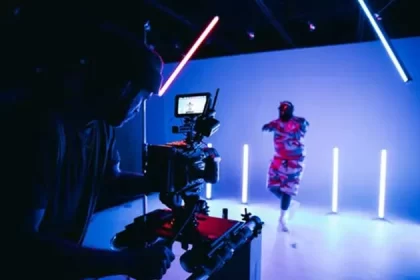Brand positioning used to be primarily about messaging and market differentiation. Companies would craft mission statements, identify target audiences, and develop unique value propositions, often treating visual elements as an afterthought. That approach feels increasingly outdated in a world where consumers process visual information faster than ever before.
The reality is that visual direction has become inseparable from brand positioning. The colors, typography, imagery, and overall aesthetic choices don’t just support the brand message; they often communicate positioning more effectively than words ever could. This shift has profound implications for how companies think about their visual identity and its role in market perception.
The Psychology of Visual First Impressions
Human brains process visual information remarkably quickly, forming opinions about brands before conscious thought even engages. Studies suggest that people make judgments about website credibility within milliseconds of viewing, and similar principles apply to all visual brand touchpoints.
This rapid processing means that visual elements are doing heavy lifting in terms of positioning communication. A tech startup using playful, rounded fonts and bright colors signals something completely different than one using sharp, minimalist typography and a monochromatic palette. Neither approach is inherently right or wrong, but each communicates distinct positioning messages about the company’s personality, target market, and market position.
The challenge lies in ensuring that these visual signals align with intended positioning. Misalignment between visual direction and strategic positioning creates cognitive dissonance for audiences, potentially undermining marketing effectiveness and brand clarity.
Strategic Integration of Visual Elements
Effective visual direction and positioning requires understanding how different design elements contribute to market perception. Color psychology plays a significant role; financial institutions gravitate toward blues and grays to communicate trust and stability, while creative agencies might embrace bold, unexpected color combinations to signal innovation and originality.
Typography choices carry similar weight. Serif fonts often communicate tradition, reliability, and established expertise, while sans-serif options suggest modernity and approachability. Script fonts can imply luxury or craftsmanship, depending on their execution and context. These aren’t arbitrary associations; they’re built on decades of cultural conditioning and consistent usage patterns.
But successful visual direction goes beyond individual elements to consider the overall system. How do colors, fonts, imagery styles, and layout principles work together to create a cohesive impression? The most effective brands develop visual languages that feel inevitable, where every element supports the overall positioning strategy without feeling forced or contrived.
Market Context Influences Visual Choices
Visual direction cannot be developed in isolation from competitive landscape analysis. Companies need to understand not just what visual approaches their direct competitors are using, but also what visual territories are available for differentiation.
Sometimes the most effective positioning strategy involves deliberately contrasting with category norms. If every company in a particular sector uses similar color palettes and design approaches, there might be opportunities to gain attention and communicate different values through contrasting visual choices.
However, this approach requires careful consideration of whether visual differentiation supports or undermines the desired market position. A law firm might benefit from slightly more approachable visual styling than its competitors, but going too far in that direction could undermine perceptions of competence and reliability.
Evolution and Consistency Challenges
Brand positioning isn’t static, and visual direction needs to accommodate evolution while maintaining recognition and equity. Companies that achieve sustainable growth often need to adjust their positioning over time, which creates interesting challenges for visual identity systems.
The most successful approaches build in flexibility from the beginning. This might mean developing color palettes that can expand or contract based on different contexts, or choosing typography systems that can accommodate different tones and applications while maintaining core brand recognition.
Some companies attempt major visual overhauls to signal positioning changes, but this approach carries significant risks. Existing brand equity can be destroyed, customer recognition can be lost, and the new visual direction might not effectively communicate the intended positioning shift.
Digital-First Considerations
Modern visual direction must account for digital-first customer interactions. Traditional print-based design principles don’t always translate effectively to screen-based applications, mobile interfaces, and social media contexts.
This reality affects positioning communication in subtle but important ways. Visual elements that work beautifully in print materials might lose impact when compressed for social media thumbnails or displayed on various screen sizes and resolutions. Companies need visual systems that maintain positioning clarity across these different contexts.
The rise of video content, interactive experiences, and dynamic visual elements also creates new opportunities for positioning communication. Motion graphics, animation principles, and interactive behaviors can all contribute to how audiences perceive brand personality and market position.
Measuring Visual Impact
Determining whether visual direction effectively supports positioning goals requires both quantitative and qualitative assessment methods. Brand perception surveys can reveal whether visual elements are communicating intended messages to target audiences.
However, the most valuable insights often come from observing actual behavior rather than relying solely on stated preferences. How do people interact with the brand across different touchpoints? Does the visual direction encourage desired actions and engagement patterns?
The Bottom Line
Visual direction has evolved from a supporting element of brand strategy to a primary driver of positioning communication. Companies that understand this shift and integrate visual thinking into their strategic positioning processes gain significant advantages in market clarity and customer connection. The key lies in ensuring that every visual choice, from color selection to typography to imagery style, actively supports the desired market position rather than simply looking attractive. In an increasingly visual world, brands that treat aesthetic decisions as strategic positioning tools are better equipped to build lasting market presence and customer relationships.










